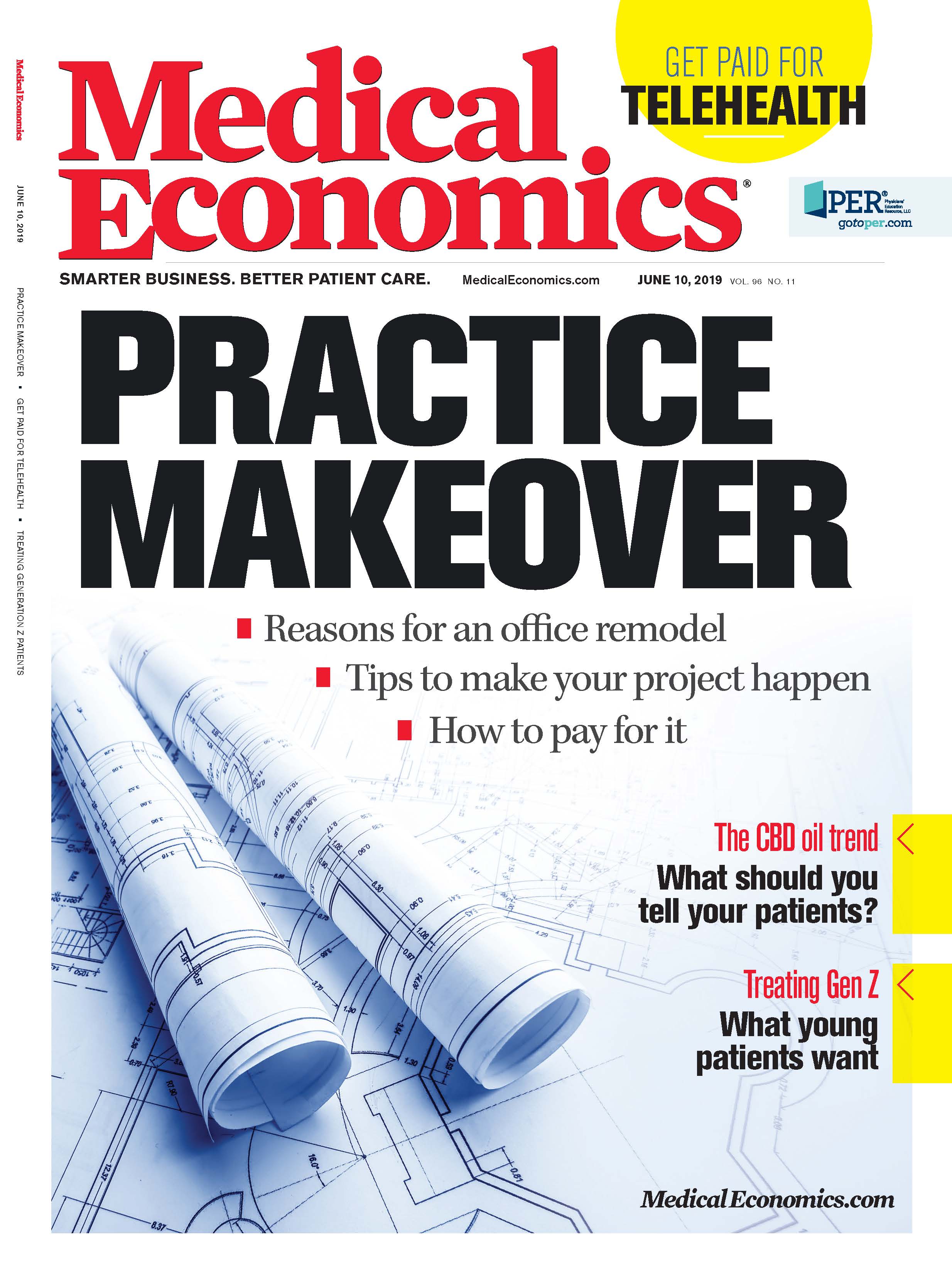Publication
Article
Medical Economics Journal
Is your EHR a malpractice risk?
Author(s):
With the implementation of electronic health records, the country has seen a rise in what used to be a relatively rare malpractice situation: medical liability claims with an EHR as a contributing factor.

In his 2004 State of the Union address, former President George W. Bush introduced a plan to roll out EHRs across the country, stating, “By computerizing health records, we can avoid dangerous medical mistakes, reduce costs, and improve care.”
Certainly, the desire to avoid medical errors, a major basis of medical malpractice claims, was one of the driving forces behind EHR adoption. But with the implementation of these systems, the country has seen a rise in what used to be a relatively rare malpractice situation: medical liability claims with an EHR as a contributing factor.
EHRs have evolved but variability remains in what different systems offer, says Mark Graber, MD, FACP, chief medical officer of the Society to Improve Diagnosis in Medicine, who has investigated EHR-related events in medical malpractice claims.
“When you introduce any new technology, you are going to see bugs,” he says. “But you also introduce the possibility of users making errors. Doctors who aren’t trained well on the system may make unintentional mistakes.”
Rising claims, rising concerns
A 2017 research report by The Doctors Company, a medical malpractice insurer, revealed that the number of medical malpractice claims among their approximately 80,000 plan members involving EHRs in some way has risen in lockstep with EHR adoption.
The report found two closed EHR-related claims between 2007 and 2010. Between 2011 and 2013, the number jumped to an average of about 23 claims each year. The upward trend continued in 2014, 2015, and 2016: where a total of 92 EHR-related malpractice claims over the three years, or an average of about 30 per year, were closed.
Such medical errors can have profound consequences for patients. In a 2015 study published in the Journal of Public Safety, Graber and his colleagues discovered most EHR-related errors involved medications, diagnoses, or a complication of treatment in the ambulatory care setting.
Perhaps most strikingly, 80 percent of such claims involved moderate or severe harm to the patient. Daryl Zaslow, JD, an attorney specializing in medical malpractice law, says there are many ways that malpractice could arise from an error in a patient’s EHR.
“What typically happens is that there’s a failure to input or access information that is vital to a patient’s health,” he explains. “Therefore, that information is not communicated to another medical care provider who is also involved with the patient’s care and something bad happens.”
It’s not just the technology
While it would be easy to blame technology for critical information slipping through the cracks, Hardeep Singh, MD, MPH, chief of health policy, quality, and informatics at the Veteran’s Administration and professor at the Baylor College of Medicine, says a physician could have the best EHR system in the world and still be a victim of “unintended consequences.”
“There are instances where, thanks to a technical glitch, there have been medical issues,” he says. “Sometimes, the technology is not safe, it’s got a bug or a virus or it’s down because you don’t have the right updates.”
The Doctors Company study found system errors like fragmented EHRs (i.e., a system where key sections of a patient’s record aren’t located together), technology failures, and electronic data routing issues did contribute to some claims. But Zaslow says true technology-related cases are uncommon.
“Unfortunately, because these systems aren’t as user-friendly as they often claim to be, and because medical providers have a lot of responsibility keeping track of a lot of things for a lot of different patients, important information just isn’t being inputted in the right way,” he says.
That’s why it’s important to look at where, when, and how users are making those sorts of errors, Singh says. He argues that a lack of standard interfaces for EHR systems makes it more likely that clinicians may incorrectly enter-or fail to enter-patient data into the system.
In addition, since many physicians use multiple systems across different facilities, it can be difficult to know where information should be entered or accessed. He adds that it’s also important to consider how clinicians are using EHR systems-because errors still occur even in the most user-friendly platforms.
There is now a well-established link between EHR usage and increased physician burnout with studies showing that primary care physicians can spend more than half of their work day on the EHR due to billing and regulatory requirements. These increased demands often result in a more demanding workload and amplified feelings of frustration-and, too often, a physician’s attention being drawn away from what should be their top priority: documenting and assessing important patient data.
To address the issue, many healthcare organizations have tried to find ways to ease those documentation requirements. They may select EHR systems that offer auto-population features, or the ability to automatically fill in different data fields when a user opens or completes the record. They may also appreciate the idea of customized templates for different portions of the patient record, which help automate entry of what is often redundant patient data.
Furthermore, physicians may develop their own short-cuts and workarounds, skipping certain fields in the record or using the copy and paste function to quickly move information from one part of the record to another. Ironically, Singh argues, in doing so they may be inadvertently triggering more EHR-related errors.
“People don’t realize, in their haste to get their work done, just how much extra stuff can be auto-populated, resulting in a doctor missing an abnormal lab result they need to address or a patient getting an unnecessary medication,” he says. “And the next thing you know, you are looking at a malpractice claim.”
Minding the gap
In general, Graber says, well-designed and well-maintained EHRs can easily integrate into a physician’s workflow to save time and help reduce errors. But healthcare organizations need to do their part and adopt strategies to reduce the risk of EHR-related malpractice.
One of the most obvious techniques, and one that EHR vendors often recommend, is regular system audits-relevant reviews of the system to document who has accessed and edited different records as well as what content has changed. Such audits can often identify users who are not meeting organizational policies regarding documentation, and provide insights into how workflows might be modified to better support those efforts.
In addition, those audits should help to ensure platforms are regularly updated and patched to deal with any system or security bugs.
But while audits can offer valuable information to the information technology (IT) department, Zaslow says physicians may not find the results as enlightening.
“We lawyers use IT engineers to see where and when people have made addendums and changes to the record to see which providers accessed certain portions of the record for our cases-and most hospitals have the same capabilities,” he says.
There are other strategies that can help reduce the risk of EHR-related medical errors for healthcare organizations and physicians. They start, Singh says, with hospitals and health systems taking a long, hard look at their organizational culture. Each healthcare organization should include physician champions when selecting and implementing EHR systems so as to find platforms that can best support their needs.
In addition, healthcare organizations should enact policies that assist and perhaps even reward clinical staff for taking the time to become trained on EHR systems, as well as for them to review and document patient data outside the physician-patient encounter.
“If you don’t have a work environment that supports clinicians, that doesn’t have the policies and procedures in place to support them, technology won’t help no matter how good it is,” he says. “Organizations should look at their systems and their users to see where they can make changes to help reduce errors across the board.”
Singh says that physicians also have a vital role to play in decreasing these kinds of malpractice claims. He suggests that physicians take steps to avoid the most common pitfalls that can lead to EHR-related errors.
To start, don’t disable or override alerts or reminders built into the system. If physicians feel they are experiencing “alert fatigue,” or that such alerts are interfering with care, they should inform the organization’s IT department. In addition, if physicians use copy/paste functions or auto-population features, they should be sure to double- or triple-check any notes before signing off on them.
“Having better awareness of the danger of copy/paste, autopopulation, and templates is important-these short-cuts can lead to a lot of problems,” Singh says. “But the other thing I’d say is, don’t skip on your EHR training. No one wants to do this training. But the EHR is a tool that clinicians have to use, it’s not going away-so get the training necessary so you can effectively use it.”
Avoiding EHR-related malpractice truly is a team effort, adds Graber. As these systems become an increasingly integral part of the care process, he says, it’s important to understand that they can affect the quality of care in a variety of direct and indirect ways. And the first step to mitigating those risks is awareness.
“It’s increasingly important for clinicians to understand how some of these common errors happen, and how to better mitigate them,” says Graber. “And that’s whether there is a malpractice claim on the table or not.”






